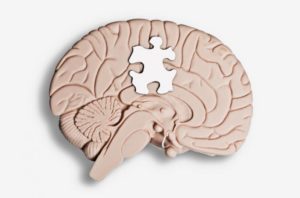 First author Dr. Christine Ecker, of the Goethe University in Frankfurt, Germany, and colleagues report their findings in the journal JAMA Psychiatry.
First author Dr. Christine Ecker, of the Goethe University in Frankfurt, Germany, and colleagues report their findings in the journal JAMA Psychiatry.
Autism spectrum disorder (ASD) – more commonly known as autism – are terms used to describe a range of complex brain development disorders that can result in significant social, communication, and behavioral challenges.
ASD is a wide-spectrum disorder: no two people with ASD will have exactly the same symptoms.
People with ASD may interact with others and learn in ways that are different from most other people. Some people with ASD need little help in their daily lives, while others need a lot.
According to the Centers for Disease Control and Prevention (CDC), around 1 in 68 children in the United States have been identified as having ASD, and the disorder is more common among boys (1 in 42) than among girls (1 in 189).
Differences in average male and female brain
Previous studies have established that the average male brain differs from the average female brain in certain structural features – for instance, the average male brain is larger in volume.
Fast facts about ASD
ASD occurs in all racial, ethnic, and socioeconomic groups
Around 44 percent of children with ASD have average to above average intellectual ability
Children born to older parents are at a higher risk for ASD.
Learn more about ASD
In their paper, Dr. Ecker and colleagues refer to a study that also finds that some brain structures known to differ among males and females overlap with areas implicated in psychiatric conditions – such as ASD.
For their investigation, the researchers chose to focus on cortical thickness, because this is one of the brain features that varies between males and females and is also found to be altered in people with ASD.
The team recruited 98 right-handed adults (49 male, 49 female) with high-functioning ASD, and they matched them with 98 adults (51 male, 47 female) without ASD (the controls). The participants ranged in age from 18 to 42 years old.
Cortical thickness was assessed using MRI brain scans, and all participants with ASD were diagnosed according to the International Statistical Classification of Diseases (ICD-10). The diagnoses were confirmed with standard clinical tests.
ASD three times more likely in females with male-like brains
From a statistical analysis, the team found that having a brain that was anatomically more male-like was linked to a higher probability of ASD than having a brain that was anatomically more female-like.
For example, the results showed that female participants whose brains were anatomically more male-like were around three times more likely to have ASD than female participants whose brains were anatomically more female-like.
The authors emphasize that their study serves more as a proof of principle, and that more work needs to be done to confirm their findings and examine the underlying causes of such differences.
They suggest that further studies should now look at whether their results can be replicated in other subgroups on the autistic spectrum; theirs was limited to high-functioning adults with ASD.
Researchers conclude that:
“Our study demonstrates that normative sex-related phenotypic diversity in brain structure affects the prevalence of ASD in addition to biological sex alone, with male neuroanatomical characteristics carrying a higher intrinsic risk for ASD than female characteristics.”
MNT DT






